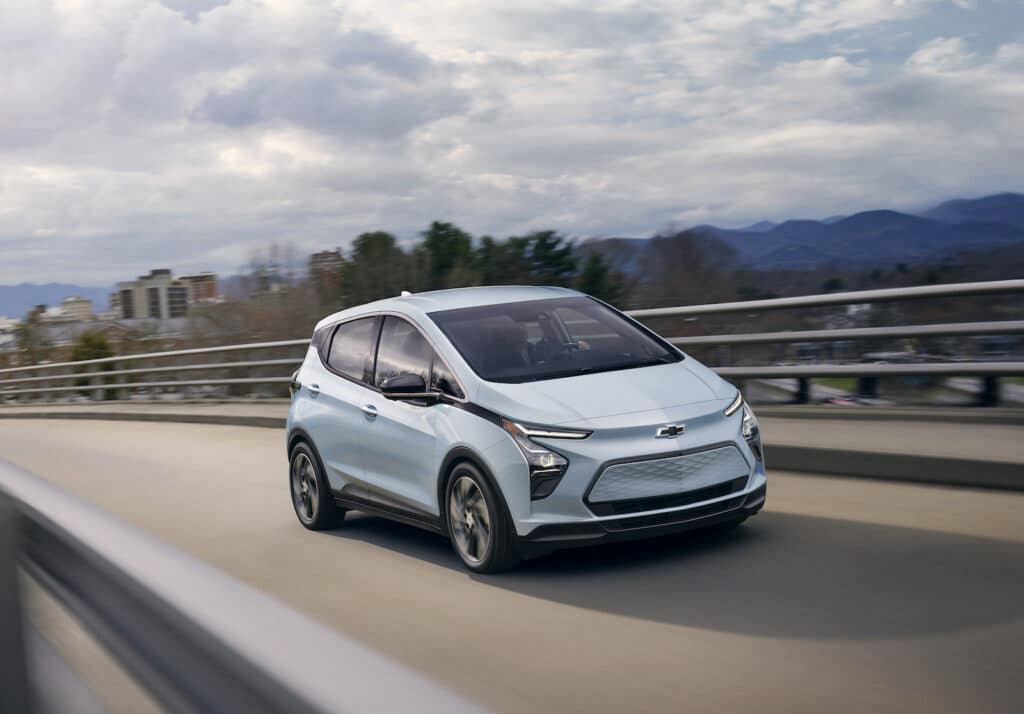AUTONEWS

According to a recent consumer poll conducted by AAA, 25% of Americans think they are more likely to choose a pure battery-electric vehicle for their next automobile, rather than one powered by an internal combustion engine or a gas-electric hybrid.
The feeling is even stronger among millennials, with 30% saying they were likely to choose an EV for their next vehicle.
Fuel cost a huge factor...Given the high cost of fuel, it’s not surprising that of those saying their next car, van, truck or SUV would be an EV, 77% said they would purchase one to save on fuel costs. AAA said the national average for a gallon of regular unleaded gasoline is $4.577 a gallon, with premium fetching $5.30 a gallon, diesel, $5.572 a gallon and E85 $3.922 a gallon
“The increase in gas prices over the last six months has pushed consumers to consider going electric, especially for younger generations,” said Greg Brannon, AAA’s director of Automotive Engineering and Industry Relations.
“They are looking for ways to save, and automakers continue to incorporate cool styling and the latest cutting-edge technology into electric vehicles, which appeal to this group.”
The finding is similar to that of a J.D. Power study released in May, which found that 24% of shoppers would consider an EV for their next purchase or lease. Still, the same study shows that 76% of people looking to buy a new car think they are not ‘very likely’ to consider an SUV, for a number of reasons. Consumer Reports revealed similar findings in its report released in last week.
High prices are a problem...Consumer reluctance over range and charging accessibility remains a hinderance to widespread EV demand, the AAA study finds.
Among the reasons that consumers are hesitant to buy EV, 60% cite a high purchase price, which is a valid concern. According to recent data from Recurrent, a company that analyzes the automotive sector, the average cost of electric vehicles has soared by 25% since last year. The report also states that there is such a great demand for EVs that owners who sell them make back virtually all of their initial investment.
“Based on soaring demand and limited supply, we should plan for these higher EV valuations to be the new normal,” said Scott Case, CEO and co-founder of Recurrent, in a statement.
But it’s not just higher prices that keeping people from considering EVs.

Other issues feed consumer apprehension...Just as large a concern for consumers is the lack of places to recharge their vehicle, a fear that prevents 60% of buyers from contemplating an EV purchase. Nearly as large a concern — 58% — is the fear of running out of power while driving. This might explain why 55% feel that EVs are unsuitable for long distance travel. An equal number, 55%, state that the high cost of battery repair or replacement is preventing them from owning one.
These last two fears are well-founded.
Only 72.5% of the San Francisco area’s 657 public DC fast chargers were functional, according to a March 2017 academic study at the University of California, Berkeley. “This level of functionality appears to conflict with the 95% to 98% uptime reported by the EV service providers who operate the EV charging stations,” the report said.
This situation could improve with the planned opening of the Tesla supercharger network to all vehicles, as Tesla’s network scores better than other networks in a 2022 Plug In America Study.
But there are more basic problems as well. More than three-in-10 of those surveyed, cite the inability to install a charging station where they live as a major impediment to EV consideration. Only 64.2% of Americans live in houses according to the U.S. Census, so nearly 40% have little to no ability to install an EV charger.
Realistic view of EVs...Most Americans have a realistic perception of EV capabilities, with 60% thinking that electric vehicles can travel between 100 to 350 miles before running out of juice, which is correct. Such range is more than sufficient for most day-to-day activities.
But that doesn’t address the lingering anxiety over an EV motor’s range and the lack of reliable, well-maintained public charging infrastructure.
“It’s going to take more than just improving how far an electric vehicle can go to convince people to make the switch,” Brannon said.
by Larry Printz

Nenhum comentário:
Postar um comentário